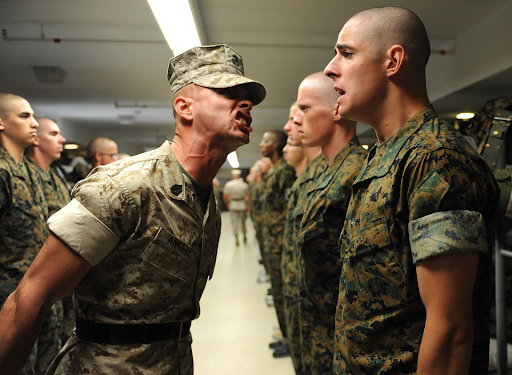
5 Unique U.S. Military Traditions, Customs, and Courtesies
The U.S. military has been around for a long time. As is natural for any institution that has such a lengthy history, a number of traditions have sprung up...
The U.S. military has been around for a long time. As is natural for any institution that has such a lengthy history, a number of traditions have sprung up over the course of the last couple of centuries. Some of these are interesting while others are downright bizarre — at least to the civilians who hear about them.
For all of the fascinatingly odd rules, pomp, and regalia, each ceremony and activity holds a special meaning and purpose, and is deeply cherished by those who preserve it. Here are a handful of the most unique military customs that the members of our armed forces continue to practice to this day.
-
The Crossing the Line Ceremony
We’ll start with what is perhaps the most peculiar military tradition of them all: The Crossing the Line Ceremony. The ceremony is, in essence, a coming of age for the inexperienced sailors on a ship. The “line” in the title of the event is in reference to the equator, which ships in the navy routinely cross these days.
The ceremony takes place as a vessel crosses the equator, with a plethora of costumes and characters being sported for the occasion, including King Neptune, the Royal Court, and Davy Jones. It primarily incorporates a series of challenges for the Pollywogs or “Wogs” of a crew (those who haven’t crossed the equator in the past).
Once completed, the Wogs become proud “Shellbacks,” a term signifying their equator-crossing experience. The ceremony itself was created back in the more harrowing days of wooden ships, when a trip across the equator was a much more difficult task.
-
The Herndon Monument Climb
Another Naval treasure, the Herndon Monument Climb is an exciting challenge posed to the first-year students at the Naval Academy.
They’re tasked with forming a human pyramid in order to reach the top of a twenty-one-foot monument named after the 19th-century naval hero Commander William Lewis Herndon. Once they reach the top, they replace a “Dixie cup” hat with an upperclassman’s hat, signifying their official shift into their next year of school.
The trickiest part of the whole ordeal? The participants can’t wear shoes — and the monument is coated in vegetable shortening. The event has taken place for over half a century, with the class of 1972 holding the record for the climb at a short 90 seconds, although there was reportedly no greasing agent involved that year.
-
Challenge Coins
Challenge coins have a long and rich history. Many organizations, like police, fire, and sheriff departments use these coins, carving each set with a specific insignia for a branch of their force or subgroup of people within it. They’re also often associated with the armed forces, as military coins have been in use from as far back as World War I.
The legend of the first challenge coins dates back to an Army Air Corps squadron during that war that received a challenge coin prototype. One member crashed behind enemy lines and when he eventually escaped, his coin was his only proof of who he was.
Nowadays, challenge coins have taken on a more lighthearted aspect. A “coin check” takes place when a member of the military pulls out their challenge coin, prompting everyone else present to do so as well. The last one to reveal theirs, or anyone who has forgotten theirs entirely, is responsible for picking up everyone else’s tab.
Games aside, challenge coins provide a sense of connectedness and support amongst members of the armed forces.
-
Mustache March
There have been more and more calls to relax the regulations regarding hairstyles within the U.S. military over time. However, the Air Force has had a relaxed policy towards specific facial hair for a long while — at least when it comes to Mustache March.
Inspired by the three-time ace pilot Brigadier General Robin Olds’ epic mustache, the tradition involves Air Force personnel collectively growing out their upper-lip whiskers. The event is a show of solidarity and support for all of the members of the branch.
-
The Sword Tap
Finally, we have the “sword tap.” A tradition of the Marine Corps, the sword tap involves accepting a new member of their military family, specifically, a spouse.
When a member of the military decides to marry a civilian in a full military-inspired ceremony, it often ends with the happy couple exiting the building through an arch of swords or sabers. When a Marine, in particular, does this, though, there’s one final piece of the ceremony that gets added onto the end, quite literally.
As the newlyweds leave the arch behind, the last member of the line will gently use their sword to tap the civilian spouse’s derriere and shout out “Welcome to the Marine Corps, ma’am!”
The Power of Tradition
While these are some of the most interesting examples, there are countless other military traditions. Each has its own unique background and history. Each tradition is proudly kept up by a group of men and women who are unabashedly dedicated to their careers, their craft, and their roles as members of the armed forces.
It’s that level of commitment and respect for duty that makes each of these traditions a hallowed affair. No matter how bizarre or outlandish the activity itself, each military custom that continues to persist marks yet another way that the members of the United States military have continued to bond, survive, and thrive as they protect their families and the country they love.